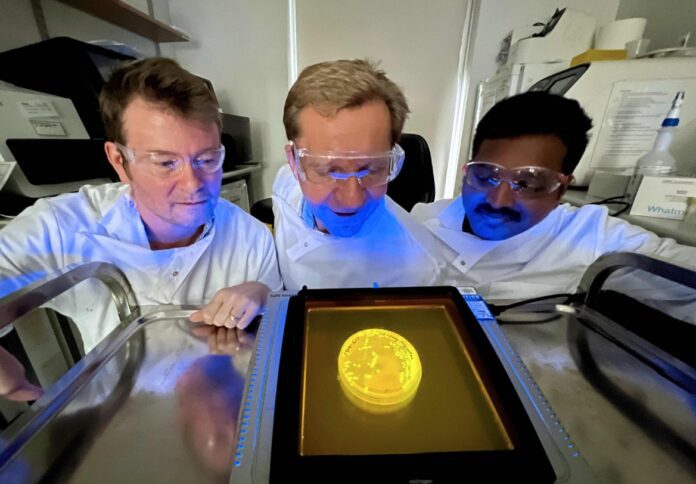
Researchers from the Australian Institute for Bioengineering and Nanotechnology (AIBN) at the University of Queensland have developed powdery “nanoprobes” from baker’s yeast that may one day be used to quickly and cheaply identify viruses in an environment.
The powdery ‘nanoprobes’ are synthetic pieces of the yeast cell wall that may be used to identify COVID-19 biomarkers in places such as airports, hospitals, stadiums, and sewers, the institute said in a news release.
The yeast nanoprobes can be integrated into current COVID-19 testing platforms as well as functioning as stand-alone sensors, according to lead researcher and director of the AIBN’s Centre for Personalised Nanomedicine Professor Matt Trau.
This is possible because of the yeast cell walls’ remarkable stability, which allows them to survive even in difficult, high-temperature, dry, and acidic or caustic conditions.
“Yeast has long been a cheap, safe and abundant ingredient in bread and beer, and thanks to its unique chemical properties, it can now be used as a universal diagnostic technology that rivals PCR testing for speed and sensitivity, whilst being cheap and easy to manufacture and stable in environments no other traditional diagnostic could withstand – such as the surface of high flow airfiltersm,” Professor Trau explained.
He further stated that the same historically affordable and highly scalable food production technologies are being used in this instance to produce a sensor powder that can be used in the environment to detect a variety of viral dangers.
Meanwhile, AIBN research fellow Dr Selvakumar Edwardraja said the yeast sensor technology may also be genetically designed to identify any specific or future viral strain, providing health systems with an early warning of new and developing viral dangers moving from animals to people.
“The constant mutation of COVID-19 means it is no longer enough to test whether someone has been infected,” Dr Edwardraja said.
Dr Chris Howard, a research co-author, stated that because yeast nanoprobes are inexpensive and simple to scale up, the technology may become a widely available tool for pandemic defence systems.
“If we want to block new and more severe variants from taking hold, we need diagnostic tools that are quick to make and distribute and can be tweaked for a wide range of on-site testing processes,” Dr Howard said.
He added, “With yeast being so cheap, this technology could be important for low-resource regions of the globe that cannot afford current expensive diagnostic tests or manufacturing facilities.”
The nanoprobe technology is described in full in the peer-reviewed journal Nature Nanotechnology.




















